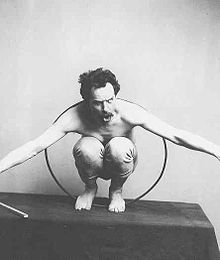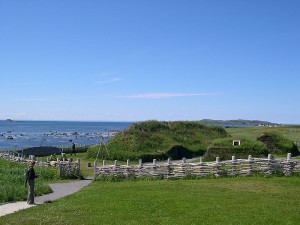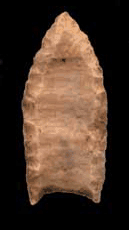Archaeology month news

Franz Boas, considered by some the “Father of American Anthropology,” posing for a National History Museum display. Archaeology is a sub-field of anthropology. Photo: via Wikipedia.
What? You didn’t notice that August is Archaeology Month?
Well, feel no shame there because Archaeology Month really gets around, as demonstrated by this state-by-state list from the Society for American Archaeology.
Not satisfied with a mere month, New York State has an “archaeology season” from May-Oct. Vermont has opted for September.
For Canada and the U.S. National Parks service, at least, the event comes in August.
I’m not actually a huge fan of designations like Black History Month (Feb for the U.S. and Canada, Oct for the U.K.) Women’s History Month (March), National Poetry Month (April) and so on and so forth. It seems both forced and ghetto-like. (I mean, why confine poetry, women or Black topics to a single month, or make people pretend to care?)
The best I can say about the practice is the structure offers an excuse to bring up topics and events that would otherwise likely escape notice.
So, here’s a list of archaeology-related events taking place in Canada’s capital region. And more about events in Quebec.
In actual archaeology-related news, the Ottawa Citizen recently reported on findings that could (perhaps) pertain to early European exploration of North America. To wit:
…newly announced evidence of human activity between AD 350 and 550 in the Faroes — a self-governing province of Denmark that lies between northernmost Scotland and Iceland — is at least raising questions about who the early colonizers were, how they reached such a distant shore and whether their previously undetected presence there could bolster claims that adventurous Irish monks really did blaze a trail of westward discovery in the North Atlantic centuries before such European explorers as Leif Ericsson and John Cabot.
The main thing I have learned from a lay observations of who/what/where/when explorations is this: the story changes. I am old enough to have started out with school textbooks that said Columbus was the first European to get to the New World, though some speculate it was remotely possible others had preceded his expedition.
That got changed to a possible theory that Vikings made it to Vinland (Newfoundland) ahead of Columbus. And not long after that, the theory that Vikings beat Columbus was generally accepted. A fair number of new possibilities are now sitting in the “possible, but needs more proof” box, including Irish monks and Chinese junks.
I am one of those history geeks who likes serious re-enactment programs, though I take what the experts say, and what the re-eneactors do, with a grain of salt. Sometimes we can only guess – or claim to know – what happened in the past.
My favorite illustration of that so far comes from a project in Great Britain where modern folks took time out to live an iron-age existence. (I cannot remember the name of the program, but here is more on what life in that time was like from the BBC.) I have to say – at times at least – it didn’t look all that different from some of the “back-to-the-land” type communes of that era.
Hmm, hold on! The Internet provided what foggy memory lets slip. It must have been this: “Living in the Past” a BBC series from 1978. (Parts of which are still available on YouTube, with a “what-happened-to-them-later” follow up that I must go watch.)
Anyway, the inhabitants went about daily life with the experts dropping by weekly to see how the experience was going. One one such visit, the experts were thrilled to see a hollow depression in the dirt near the hut door – something that had been observed in digs.
What did it mean? Why and how had it been recreated? Theories existed, but this could prove it once and for all!
“Oh,” said the pretend iron-age villagers. “That’s where the hens come in for a dirt bath whenever it’s raining outside.”
From which I conclude, there is much to be learned about the past. But it won’t all be what we might expect.
Tags: archaeology, Archaeology month, BBC series: Living in the past, canada, National Park Service, Parks Canada, social sciences









